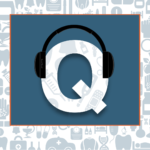Poverty in North Dakota and South Dakota, like in many states across the United States, can vary based on several factors such as location, demographics, and economic conditions. Both states have unique challenges and characteristics contributing to their poverty rates.
These poverty thresholds are used for statistical purposes to calculate the number of Americans living in poverty. They are also the starting points from which federal “poverty guidelines” are calculated. According to the most recent report issued in January 2023 of the US Census Bureau, the poverty threshold for a family of four is $29,960. The Census Bureau estimates that in 2021, 11.6% of Americans — roughly 38 million people — lived at or below the poverty level. In 2019, North Dakota’s poverty rate was lower than the national average at 9.3% and South Dakota was at 11.8%, which was slightly higher than the national average.
United Way of Goodhue, Wabasha and Pierce Counties has created a Poverty Simulator, to illustrate how hard navigating poverty can be. Within the simulator, you must make important decisions regarding housing, childcare, food, and healthcare. Your income is dispersed in the form of 15 credits. You choose where to allocate your credits; three meals a day, transportation or healthcare?
Poverty significantly impacts access to healthcare and several ways. Financial constraints often prevent individuals from affording health insurance or medical services, leading to delayed or neglected healthcare needs. Limited resources may also restrict access to transportation, making it difficult to reach health care facilities and services. Additionally, individuals in poverty may face barriers, such as language barriers, lack of health literacy, or discrimination, making it more difficult to find care. As a result, those living in poverty often experience poor health outcomes.
As a healthcare community, we can do better to meet the needs of our community by better understanding the complexities and barriers faced and showing empathy. Also, it is important to identifying and better understanding programs to assist individuals with housing needs, transportation issues and nutrition guidance – and serving as a liaison to support and resources.
CMS and other federal programs offer a variety of resources to help people learn how to access their health coverage, manage health care costs and fully utilize their benefits. Visit the CMS Office of Minority Health website to learn more. Access the Healthy People 2030 Report which explains and provides solutions to social determinants of health (SDOH); which are the conditions in the environments where people are born, live, learn, work, play, worship, and age that affect a wide range of health, functioning and quality-of-life outcomes and risks.
United Way of Goodhue, Wabasha and Pierce Counties mission is all about uplifting lives by uniting the caring efforts of their communities. As a volunteer led nonprofit, they are committed to promoting the greater good. With education, basic needs, and health as their primary objectives, they aim to lay the groundwork for helping the communities they serve. Currently, they are serving in parts of Minnesota and Wisconsin.
Source: Data Commons Place Rankings
 Listen To Our Podcast: Q-Tips For Your Ears!
Listen To Our Podcast: Q-Tips For Your Ears!

